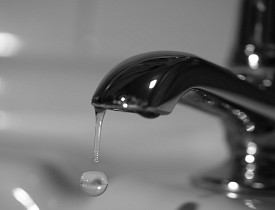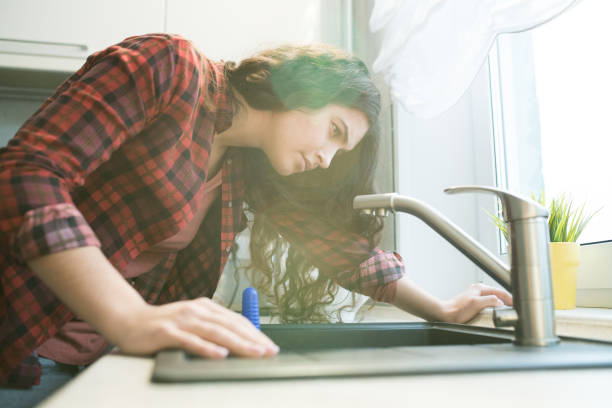Reasons Why It's Critical to Mend a Broken Faucet
Reasons Why It's Critical to Mend a Broken Faucet
Blog Article
They are making a number of great pointers related to Why Are My Faucets Dripping (And Can I Fix It Myself)? in general in the content in the next paragraphs.

Dripping faucets may feel like a minor trouble, however their effect exceeds simply the aggravation of the audio. From wasting water to incurring unneeded economic expenses and wellness dangers, neglecting a leaking faucet can lead to various consequences. In this short article, we'll explore why it's critical to resolve this typical household issue immediately and effectively.
Wastage of Water
Environmental Effect
Dripping faucets add considerably to water wastage. According to the Environmental Protection Agency (EPA), a solitary tap trickling at one drip per second can waste greater than 3,000 gallons of water each year. This not only pressures water resources but additionally influences ecological communities and wild animals dependent on them.
Financial Costs
Enhanced Water Costs
Beyond the environmental impact, dripping taps can pump up water bills substantially. The built up wastefulness over time translates right into higher utility costs, which might have been avoided with timely repair services.
Prospective Building Damage
Additionally, extended dripping can cause damage to fixtures and surface areas bordering the faucet. Water accumulation can create staining, deterioration, and even architectural issues if left ignored, resulting in added fixing costs.
Health Problems
Mold And Mildew and Mold Growth
The consistent presence of dampness from a dripping tap creates an ideal environment for mold and mildew growth. These fungis not only jeopardize interior air quality however also pose health and wellness dangers, especially for individuals with respiratory problems or allergic reactions.
Waterborne Illness
Stagnant water in dripping taps can come to be a breeding ground for microorganisms and various other virus, enhancing the threat of waterborne diseases. Pollutants such as Legionella microorganisms thrive in stationary water, possibly resulting in significant health problems when ingested or breathed in.
DIY vs. Specialist Repair work
Advantages and disadvantages of DIY Repair
While some might attempt to fix a trickling tap themselves, do it yourself repair services include their own set of obstacles. Without proper understanding and tools, do it yourself attempts can exacerbate the concern or cause incomplete repair work, extending the issue.
Advantages of Hiring a Professional Plumber
Working with an expert plumber makes certain that the underlying cause of the dripping tap is addressed properly. Plumbers possess the competence and devices to detect and fix faucet issues successfully, conserving time and lessening the threat of more damage.
Step-by-Step Overview to Taking Care Of a Dripping Tap
Tools Needed
Prior to attempting to repair a trickling tap, collect the essential devices, including an adjustable wrench, screwdrivers, substitute parts (such as washing machines or cartridges), and plumber's tape.
Typical Faucet Issues and Their Solutions
Recognize the type of faucet and the details issue creating the drip. Common issues consist of worn-out washing machines, corroded shutoff seats, or malfunctioning O-rings. Refer to producer guidelines or on-line tutorials for step-by-step support on repair work.
Preventive Measures
Routine Upkeep Tips
To prevent leaking taps, do routine maintenance such as cleaning up aerators, checking for leaks, and replacing damaged components promptly. In addition, think about setting up water-saving gadgets or updating to more efficient fixtures.
Relevance of Prompt Repair Works
Resolving dripping taps as quickly as they're noticed stops additional water wastage and prospective damage, ultimately saving both water and money over time.
Effect On Home Worth
Understanding of Well-Maintained Property
Keeping a building in good condition, consisting of resolving maintenance issues like leaking faucets, improves its perceived worth and desirability among possible purchasers or occupants.
Impact on Resale Worth
Qualities with properly maintained plumbing fixtures, including taps, command greater resale values in the property market. Resolving dripping taps can contribute to a positive perception during residential or commercial property assessments and settlements.
Ecological Obligation
Private Payment to Conservation
Taking duty for taking care of dripping faucets straightens with wider initiatives towards water conservation and environmental sustainability. Every person's actions collectively make a considerable effect on maintaining precious resources.
Lasting Living Practices
By prioritizing timely repair work and embracing water-saving habits, individuals add to lasting living practices that benefit both existing and future generations.
Final thought
Resolving a dripping tap goes beyond mere benefit; it's a vital action toward preserving water, lowering financial prices, and safeguarding health and wellness and residential property. Whether through DIY repair work or expert aid, acting to repair trickling taps is a little yet impactful means to advertise responsible stewardship of sources and add to a healthier, much more sustainable future.
Most Common Reasons for a Leaky Faucet and How to Stop the Drip
Whether it’s your kitchen faucet leaking or a bathroom faucet leaking, one leaky faucet can waste anywhere from three to 30 gallons of water every single day. If the constant drip-drip-drip doesn’t get your attention, your water bill will. The good news is that, by following a few simple steps, chances are pretty good you can fix the problem yourself.
Why is it dripping?
Before you start taking things apart, let’s break down some of the most common causes of a leaky faucet.
Bad O-ring.
A cartridge is a valve that controls the flow of water into the faucet spout. On cartridge faucets there’s an O-ring—the little disc attached to the stem screw that holds the faucet handle in place. If it’s loose or worn-out, it can cause your sink handle to leak. Of course, the cartridge itself could be worn out. If that’s the case, make sure you replace it with the exact same kind.
Corroded valve seat.
The valve seat connects the faucet and the spout. If the leak seems to be coming from the spout, it might be because a buildup of water sediment has corroded the valve seat.
Worn-out washers or seals.
A leaky spout could be caused by a bad washer that rests against the valve seat. It’s just a matter of time before friction takes its toll. It could also be the wrong size washer or one that’s been installed incorrectly. Water sediments can also corrode inlet and outlet seals.
Water pressure.
If the faucet only drips now and then, or when you turn the handles a certain way, you should probably check your home’s water pressure.
Loose or broken parts.
The adjusting ring and packing nuts in the stream screw can become loose over time, causing your sink handle to leak. Try tightening or replacing the packing nut. If the leak is coming from the pipes underneath the sink, you probably have a broken pipe or fitting. If that’s the case, you should definitely call a plumber.
Know your faucet.
Faucets come in a variety of types. Each one has its own assembly—and its own possible causes of leaks. Learning about the four most common kinds of faucets will help you know how to take them apart and make any repairs.
How to stop a leaky faucet
Fixing that leaky faucet doesn’t have to take a lot of time, money, or expertise. It’s usually a simple matter of replacing a worn-out washer or gasket, a loose O ring, or another part. Chances are really good you can do this yourself if you follow these simple steps.
Shut off the water.
Before you tackle the faucet, cut off the water supply to the sink. There should be one valve for hot and one for cold. Hand-turn them clockwise with your hands till they close. If there are no valves under the sink, head to the basement and shut off the main water supply to the house. Then turn on the faucet until it empties out the water that’s still in the line and you’re ready to start. It’s a good idea to cover the sink drain with a plug or a rag so you don’t lose any small pieces and parts while you’re working.

I recently found that page about Why It's Important to Fix Leaky Faucets while scouting around the web. Don't hesitate to pause to distribute this content if you liked it. Thank you so much for going through it.
Report this page